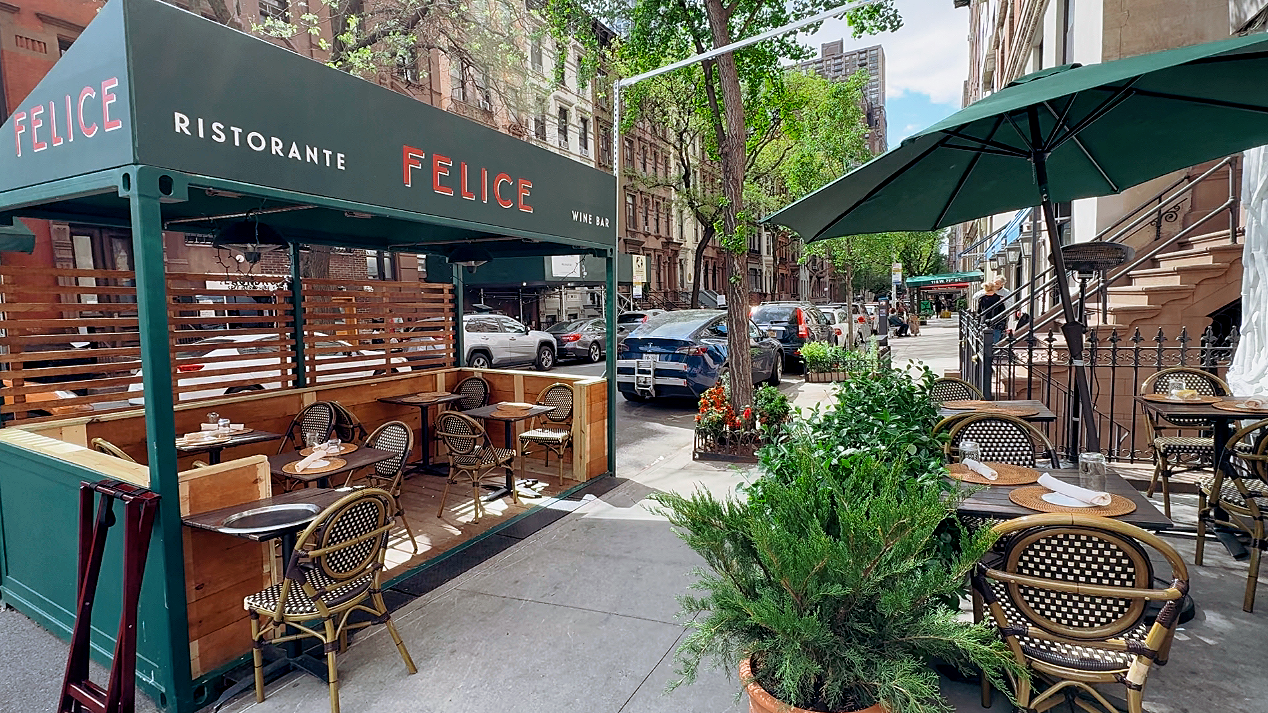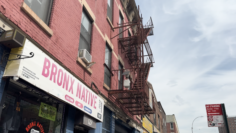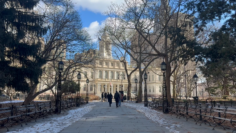NYC’s New Outdoor Dining Program is Off to a Rocky Start
NEW YORK — It’s a month into New York City’s revamped outdoor dining season. Restaurant owners are raising concerns about the new rules, saying the costs, paperwork, and seasonal restrictions are discouraging participation.
At the height of the pandemic, more than 12,000 restaurants extended their seating onto sidewalks and roadways, keeping businesses afloat and generating an estimated $400 million in revenue. However, with the passage of new legislation by the City Council, roadway dining is no longer permitted year-round. It’s now seasonal, running only from April to November.
While city officials claim the new Dining Out NYC program is designed to be more affordable, advocates and business owners argue otherwise. Open Plans found that indirect costs, such as storage and setup, make the program more expensive for many small businesses.
“There were quotes somewhere around $20,000 for a year of storage and then putting back up and taking down,” said Michael Sutherland, Senior Policy and Legislative Analyst at Open Plans. “That’s a really big burden.”
Liz Vaknin, manager of the Santa Fe restaurant, said the storage issue is particularly challenging in New York. “It’s New York City. Space is very limited,” she said.
This year, only 3,500 restaurants applied for permits, a huge drop from the peak of the pandemic. For many small businesses, outdoor dining seating isn’t just nice to have, it’s essential for survival.
“Our inside area is very small,” said El Mitote restaurant manager Edwin Escamilla. “Even though the application is expensive, it’s worth it for the restaurant because it doubles our size.”
City comptroller and mayoral candidate Brad Lander called the permit delays ‘crazy’ and criticized the Department of Transportation for messing it up even further.
“They just didn’t hire and create the systems necessary,” Lander said. “Meanwhile, the poor restaurants are stuck in limbo.” He is pushing to remove the seasonal restrictions and streamline the application process.
The City Council held a hearing and released new reports in an effort to examine the challenges with implementing the city’s revamped outdoor dining program.
Open Plans’ report also highlights inequities in how the program is rolling out. Most approved permits are concentrated in wealthier neighborhoods. Fifty-nine percent were in Manhattan, 34 percent in Brooklyn, 6 percent in Queens, 1 percent in the Bronx, and none in Staten Island.
“A lot of that also begets things like racial disparities and economic disparities in who can access outdoor dining,” Sutherland said.
For New Yorkers, outdoor dining has become part of the city’s identity.
“I think it adds a lot of socialization to the city that you don’t get,” said Annie Brandon, a Manhattan resident.
Jennifer Gan is from Nanjing, China, and covers Arts and Culture for City Newsroom. She has experience in broadcast reporting and obtained a dual degree in Journalism and Psychology before coming to J-school.
















